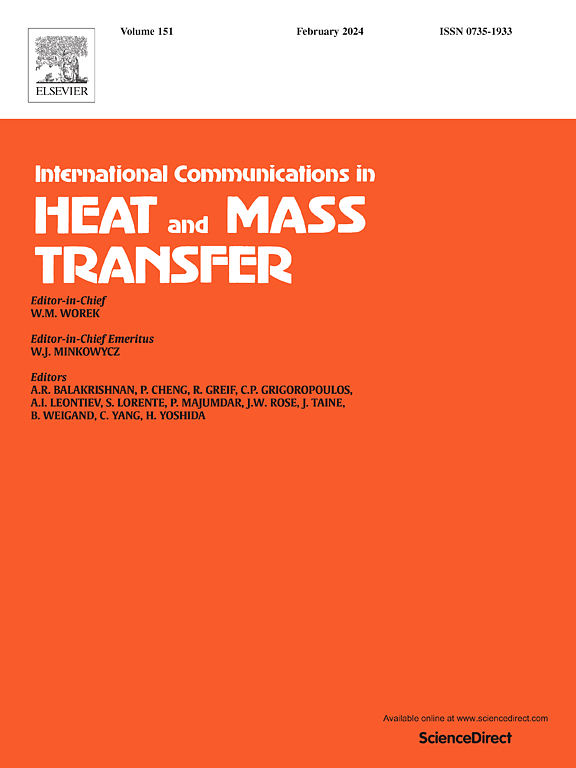Boiling heat transfer of liquid helium induced by thermal disturbance in superconductors
IF 6.4
2区 工程技术
Q1 MECHANICS
International Communications in Heat and Mass Transfer
Pub Date : 2025-02-19
DOI:10.1016/j.icheatmasstransfer.2025.108724
引用次数: 0
Abstract
This paper investigates the fluid-solid coupling boiling heat transfer between superconductor and liquid helium using the Multiple-Relaxation-Time (MRT) pseudo potential lattice Boltzmann model. The reliability of the numerical model is verified by Laplace law and thermodynamic consistency of helium medium. This work focuses on pool boiling, with an emphasis on the influence of surface wettability and thermal disturbance in the superconductor. The numerical results reveal the boiling curves of liquid helium with different surface wettability and the four phases of boiling. Additionally, the flow field of liquid helium boiling, including the nucleation, growth, and detachment of a single helium bubble, is simulated and analyzed in detail. And we also study the temperature changes of superconductor under different thermal disturbances and current densities. It can be found that nuclear boiling caused by smaller thermal perturbations has a high cooling efficiency, whereas larger thermal perturbations cause film boiling with a much lower cooling efficiency. Meanwhile, the hydrophobic surface reduces the critical heat flux for liquid helium boiling, which causes liquid helium to initiate film boiling at a lower superheat, severely inhibiting the cooling capacity of liquid helium.
求助全文
约1分钟内获得全文
求助全文
来源期刊
CiteScore
11.00
自引率
10.00%
发文量
648
审稿时长
32 days
期刊介绍:
International Communications in Heat and Mass Transfer serves as a world forum for the rapid dissemination of new ideas, new measurement techniques, preliminary findings of ongoing investigations, discussions, and criticisms in the field of heat and mass transfer. Two types of manuscript will be considered for publication: communications (short reports of new work or discussions of work which has already been published) and summaries (abstracts of reports, theses or manuscripts which are too long for publication in full). Together with its companion publication, International Journal of Heat and Mass Transfer, with which it shares the same Board of Editors, this journal is read by research workers and engineers throughout the world.

 求助内容:
求助内容: 应助结果提醒方式:
应助结果提醒方式:


